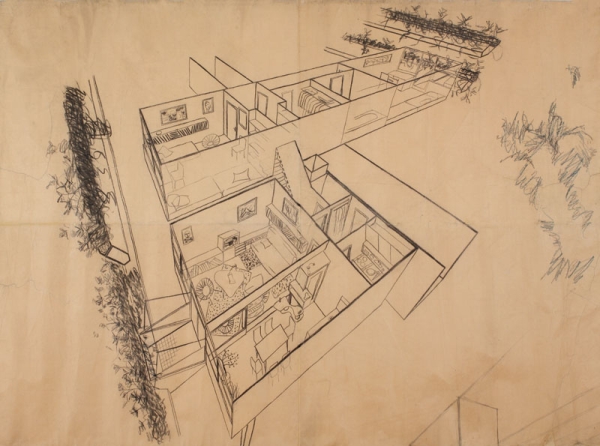Necessity as a Program of Architecture
Text: Samu Szemerey

Szalagh├Īz, lak├│egys├®g, 1960-as ├®vek eleje, reprodukci├│: Hajd├║ J├│zsef
Necessity as a designing programme describes the history of architecture in the modern age as a shadow. The shape and direction of this shadow kept changing with the historical periods, defining those who are needy, according to the recognized or supposed needs and the jurisdiction presently attributed to architecture, but its role in the culture of modernism and its approach to environmentalism is unquestionable. It is indeed so even if this thread in the history of architecture is interspersed mainly with unbuilt designs, heroic failures, debates going on even now, and even though it is rarely included in notes on architectural achievements that shine afar typically surrounded with doubts and question marks.
What is this unquestionable nature about? How come that ŌĆō in spite of its challengeable legitimity, wedged between quotation marks and comments ŌĆō the architectural programme of necessity has almost always been the source of inspiration for design? If its cultivators tend to rarely enjoy the appreciation of their activities, if the reality of neediness inevitably runs against construction promoting the existence of resources and the certainty of fundaments? It may be a result of the period, but the time of need seems to be a lucky one at least as far as architecture is concerned. Enlightenment brought along the programme which endowed development, technological innovation and their operators with the capacity to overcome social problems and opened the door for architecture as well: sometimes as a commissioned agent, sometimes as an initiating or supervising power, but the designers came to be involved in the entirety of society from that time on in an unbreakable relationship. Their case came to be that of a community in such a way that the innovative programme of architecture joined that of social renewal. The burning issue inevitably brought about the ultimate freedom of the designer when it came to applied devices, as the existence of problems proved the unfitness of the solutions used so far: desperate times call for desperate measures.
